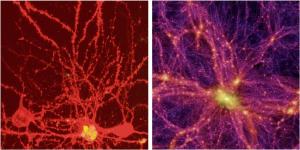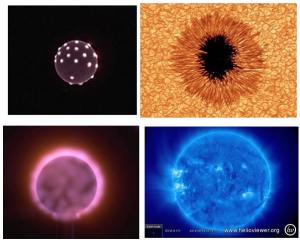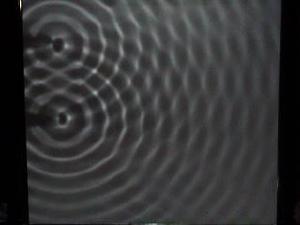Blog
Quacks Like a Duck
17 December 2014
 Mark Miller/Virgo Consortium
Mark Miller/Virgo ConsortiumThe image above features a neuron on the left, and a simulation of large scale galaxy clusters on the right. They look somewhat similar in structure, and if the internet is to be believed, this means something. And it does. Not that the universe is alive, or the cosmos is like a giant brain, but simply that sometimes two radically different things can have similarities in structure.
I’ve been getting a lot of comments and emails lately from fans of alternative science models such as the electric universe. They typically link to a video asking for my thoughts, or simply stating that it proves “us scientists” are clearly wrong. I’ve been watching a few of them, since it’s a good way to avoid grading final exams, and I’ve noticed a common trend. I’ll call it the “if it looks like a duck” argument.
 Paul E. Anderson, et al
Paul E. Anderson, et alA Tesla ball and the Sun have some similarities. Credit: Paul E. Anderson, et al.
For example, there’s a recent experiment by electric universe supporters known as the SAFIRE project. The basic setup is a plasma globe (or Tesla ball) where things like voltage, current, and gas pressure can be varied. What the project shows is that there are some broad similarities between a plasma ball and the Sun. There are current hot spots, an overall surface glow, and the surrounding plasma gets hotter than the surface of the ball. The similarities are kind of interesting to see, but from them many EU supporters claim that this demonstrates the Sun is actually electrically charged. That is, the similarities show that the underlying physics must be the same.
 Wikipedia
WikipediaThis is a common misconception, particularly within “alternative” science. It is why you often hear arguments that one doesn’t need to get bogged down in the details (or mathematics) because the solution is so obviously clear. But physics is filled with things that are structurally similar but caused by very different underlying processes. A popular example in introductory physics is the use of water waves to demonstrate the interference of light. Water can be used to help explain the double slit experiment for light, because both water and light exhibit wave behavior. However it is completely unfounded to conclude from this that light is literally made of water.
The power of such physical analogies is that they make complex phenomena seem simple and obvious. It is why most of alternative science folks focus on videos and visual slides rather than actual research papers, and why so many people send me links to these videos as “proof” that my years of training and experience are obviously wrong.
But just as light is not made of water and galactic superclusters are not neurons, the Sun is not electric. Physical similarities are useful to explore, and they are sometimes right, but they are often wrong.